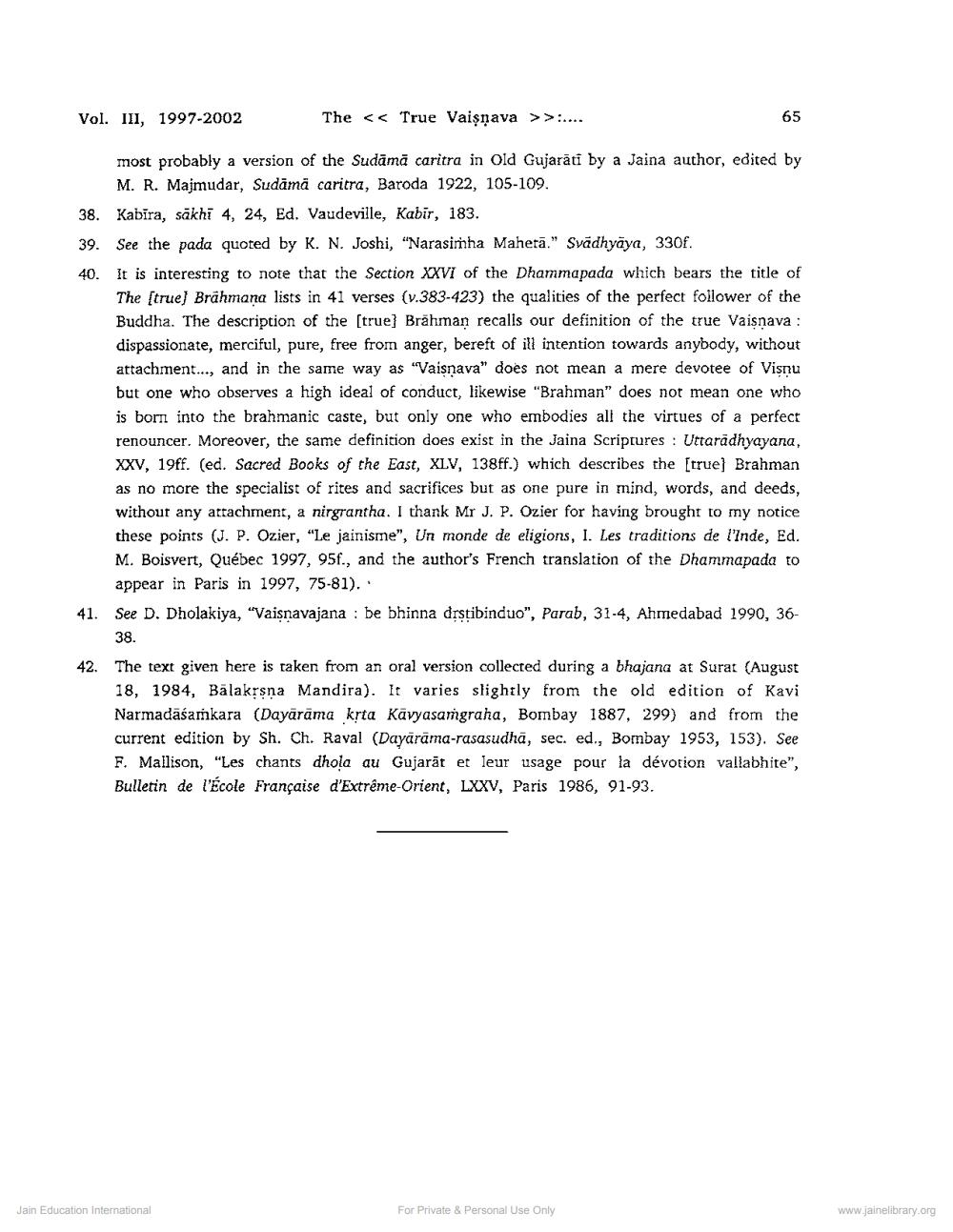Book Title: Jaina Heritage in Gujarat Author(s): Francoise Mallison Publisher: Z_Nirgrantha_1_022701.pdf and Nirgrantha_2_022702.pdf and Nirgrantha_3_022703.pdf View full book textPage 9
________________ Vol. III, 1997-2002 The << True Vaisnava >>..... 65 most probably a version of the Sudama caritra in Old Gujarati by a Jaina author, edited by M. R. Majmudar, Sudama сaritra, Baroda 1922, 105-109. 38. Kabira, sakhi 4, 24, Ed. Vaudeville, Kabir, 183. 39. See the pada quoted by K. N. Joshi, "Narasimha Maheta." Svadhyaya, 330f. 40. It is interesting to note that the Section XXVI of the Dhammapada which bears the title of The (true) Brahmana lists in 41 verses (v.383-423) the qualities of the perfect follower of the Buddha. The description of the (true) Brahman recalls our definition of the true Vaisnava : dispassionate, merciful, pure, free from anger, bereft of ill intention towards anybody, without attachment..., and in the same way as "Vaisnava" does not mean a mere devotee of Visnu but one who observes a high ideal of conduct, likewise "Brahman" does not mean one who is born into the brahmanic caste, but only one who embodies all the virtues of a perfect renouncer. Moreover, the same definition does exist in the Jaina Scriptures : Uttaradhyayana, XXV, 19ff. (ed. Sacred Books of the East, XLV, 138ff.) which describes the [true} Brahman as no more the specialist of rites and sacrifices but as one pure in mind, words, and deeds, without any attachment, a nirgrantha. I thank Mr J. P. Ozier for having brought to my notice these points (J. P. Ozier, "Le jainisme", Un monde de eligions, I. Les traditions de l'Inde, Ed. M. Boisvert, Quebec 1997, 95f., and the author's French translation of the Dhammapada to appear in Paris in 1997, 75-81). 41. See D. Dholakiya, "Vaisnavajana : be bhinna drstibinduo", Parab, 31-4, Ahmedabad 1990, 36 38. 42. The text given here is taken from an oral version collected during a bhajana at Surat (August 18, 1984, Balakrsna Mandira). It varies slightly from the old edition of Kavi Narmadasamkara (Dayarama krta Kavyasamgraha, Bombay 1887, 299) and from the current edition by Sh. Ch. Raval (Dayarama-rasasudha, sec. ed., Bombay 1953, 153). See F. Mallison, "Les chants dhola au Gujarat et leur usage pour la devotion vallabhite", Bulletin de l'Ecole Francaise d'Extreme-Orient, LXXV, Paris 1986, 91-93. Jain Education International For Private & Personal Use Only www.jainelibrary.orgPage Navigation
1 ... 7 8 9
